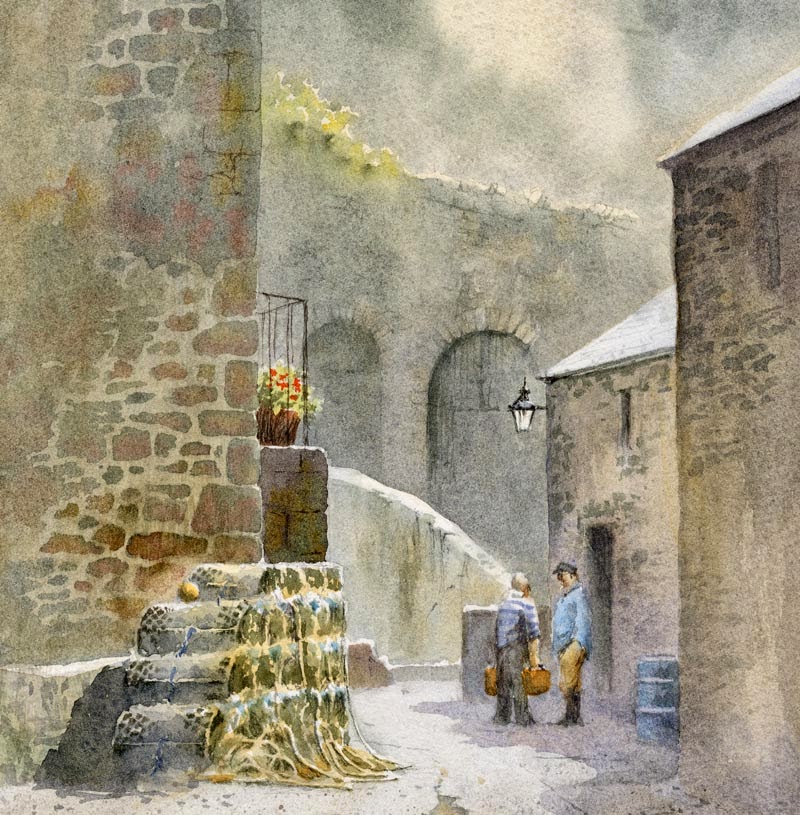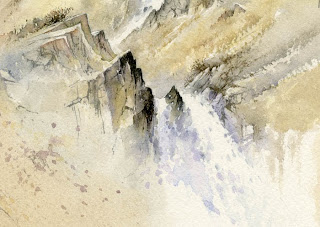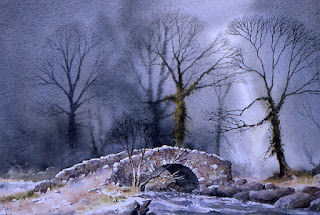Writing blogs on a steam-driven laptop is an extremely slow process, and with extremely poor internet connections it can take me hours, which is the reason I’ve slowed down the number of blogs I do. Technology in Wales seems to be in some sort of reverse decline, and once the black-outs start hitting us it will be even worse. Progress is a funny thing!
Jenny and I enjoyed Patchings Art Festival, where I did two demonstrations in the St Cuthberts marquee to large, enthusiastic audiences. It’s always a joy to work with St Cuthberts Mill, and the Saunders Waterford High-White paper is superb for getting the best out of your watercolours.

I’ve just taken some new watercolours to Art Matters in White Lion Street in Tenby (Tel. 01834 843375) and this is one, showing a quiet corner of Tenby harbour. The lovely old stone walls provide an interesting backdrop, and these were done by laying an initial wash of Naples yellow over the entire area, and once this was dry painting in the stonework with cobalt blue plus cadmium red, to which I added a few drops of yellow ochre while the stones were still wet. I left some of the Naples yellow showing as light-coloured mortar between the stones. Once again I waited until the whole area had dried and then glazed it all with a weaker wash of cobalt blue and cadmium red. This both imparted a greater sense of unity and slightly softened off the edges of the stonework.
The background has been considerably simplified so that the emphasis is thrown onto the figures in conversation, and the surface was Waterford 140lb NOT, which is excellent for taking repeated washes if necessary.

 In this small section of a painting the bush on the right-hand side has been painted by washing in two colours side by side – cadmium orange and light red – and letting them blend in. Later I painted in the darker purple-grey to the right of the bush, taking it up to the top, in a hard edge, while allowing flecks of the original colours to remain here and there. Afterwards I added the shadow under the bush and finally the branches. This approach gives a rather pleasing variegated effect to the subject and is worth practicing.
In this small section of a painting the bush on the right-hand side has been painted by washing in two colours side by side – cadmium orange and light red – and letting them blend in. Later I painted in the darker purple-grey to the right of the bush, taking it up to the top, in a hard edge, while allowing flecks of the original colours to remain here and there. Afterwards I added the shadow under the bush and finally the branches. This approach gives a rather pleasing variegated effect to the subject and is worth practicing.
 This watercolour of Hisley Bridge on the edge of Dartmoor illustrates the effectiveness of painting masking fluid over the bridge before doing any painting, then applying very fluid washes wet-into-wet for the background, bringing the wash down over the bridge with impunity, as you can lift off the masking fluid once it has dried and hey presto! the bridge appears again. The sense of mood has been accentuated by limiting the background colours in the wet-into-wet wash, with warmer colours being applied in the bridge and foreground.
This watercolour of Hisley Bridge on the edge of Dartmoor illustrates the effectiveness of painting masking fluid over the bridge before doing any painting, then applying very fluid washes wet-into-wet for the background, bringing the wash down over the bridge with impunity, as you can lift off the masking fluid once it has dried and hey presto! the bridge appears again. The sense of mood has been accentuated by limiting the background colours in the wet-into-wet wash, with warmer colours being applied in the bridge and foreground.